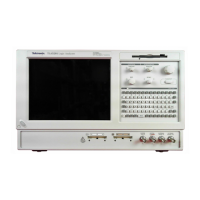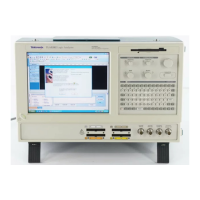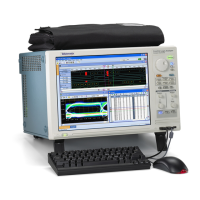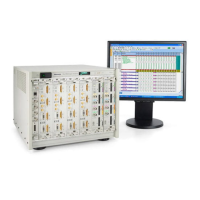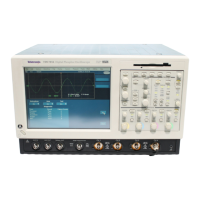Theory of operation
Althoughverya
ccurate low skew measurements usually require TDR or
VNA measurement equipment, it is possible to make relatively accurate skew
measurements of a differential signal pair using a P7700 Series probe and a
TriMode probe tip. A flex circuit based solder tip should first be soldered to the
DUT differential signal, taking care to match the A and B input wire lengths,
because the wiring length mismatch will contribute to the skew measurement
error. A DUT
ground reference connection should also be made to one of the
TriMode tip ground vias using a wire length as short as possible.
At first it m
ight seem reasonable to try t o make a skew measurement by directly
comparing the A and B signal timing. Although it is possible to display both
the single-ended A and B signals that make up the differential signal using the
TriMode measurement selection function, both signals cannot be displayed with a
single signal a cquisition of the oscilloscope. Even though it is possible to capture
the A signal and store it as a reference waveform for comparison with a follow-on
B signal
acquisition, the trigger timing uncertainty between acquisitions might
make this a less than accurate, if not impossible approach.
Amorei
ndirect, but more accurate, skew measurement should be possible by
switching the probe input mode to the common mode setting. Because the
common mode setting for a TriMode probe tip features full probe bandwidth,
the response should be fast enough to display the relative skew performance.
The common mode response for a perfectly matched, zero skew, complementary
signal pair should be a flat trace at the common DC bias voltage level. As the
skew
of the signal pair increases, the common mode waveform begins to show
narrow pulses at the signal logic transitions. The pulse width of these narrow
transition pulses is a relative measure of the skew.
30 P7700 Series TriMode Probes Technical Reference

